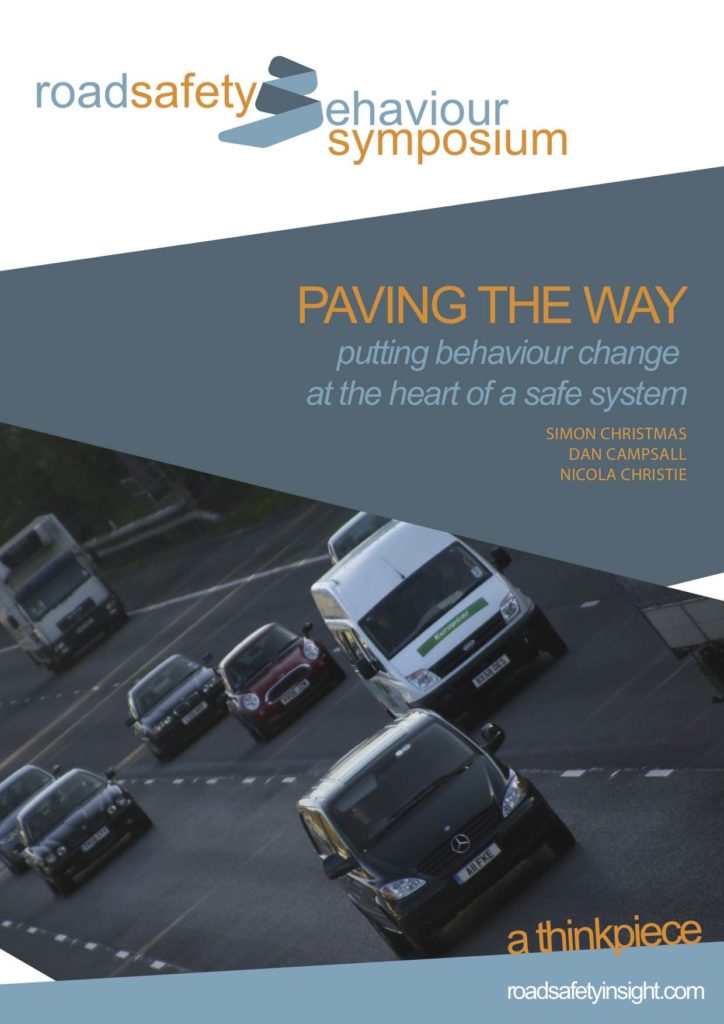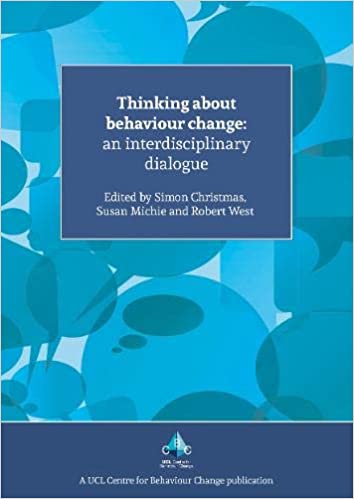Putting behaviour change at the heart of a safe system
The 2017 Highways England Symposium on Road User Behaviour took place on 14 to 15 March 2017 at Coombe Abbey, Warwickshire. The event drew together a wide range of perspectives on behaviour as it relates to road risk, reflecting available good practice from associated domains.
Inspired by expert input from researchers, practitioners and funders and by insights shared by those working in other sectors, this paper sets out a high-level vision for a refreshed approach to behaviour change in road safety, and proposes actions that leaders in the sector can be taking now.
We begin by explaining why we think a refreshed approach is called for, and describing two revolutions we believe are driving the need for change: a revolution on our roads and a revolution in behaviour change.
The aim of this paper is not to summarise the wide-ranging and diverse perspectives shared and discussed at the event – probably an impossible task – but to offer a response to them. We’ve drawn freely on ideas from both the presentations and discussions at the event. All of the best ideas in this thinkpiece are ‘stolen goods’. Any mistakes or inanities are entirely our own.
Thinking about behaviour change: an interdisciplinary dialogue
How should we think about and understand human behaviour? What’s the role of theoretical models? How can – and should – such models be used in practice? And what can we learn from the many different academic and practical perspectives on the subject? This book, aimed at anyone with an interest in behaviour change, offers a fresh and challenging take on these questions.
The book comprises a Dialogue, which sets out key debates in a lively and accessible way, and 21 commentaries written from a wide range of standpoints, including academic, commercial and public sector.
The Dialogue was created by me following an event at the UCL Centre for Behaviour Change. It brings together three imaginary graduate students – Evie, Paola and Yusuf – who attended the Centre for Behaviour Change event and have now met up to discuss further some of the issues raised.
You can download Dialogue below. The rest of the book you’ll have to buy, I’m afraid!
Nine big questions about behaviour change
This piece, commissioned by the Department for Transport in 2009, was one of my first attempts to say something sensible about behaviour change. I’m not sure I succeeded then, and I’m not sure I’ve succeed yet! Nonetheless, I stand by both the output and the approach. (You can download the former at the foot of this page.)
Who changes what?
Working on a ‘thinkpiece’ gives you the opportunity to be a little bolder than one might be when reporting a research project. Here’s an example of what I felt empowered to do:
The phrase ‘behaviour change’, like all verbs turned into nouns, fudges a critical question: who changes what? It’s far too easy to slide from talk of ‘behaviour change’ into discussion of how government can change people’s behaviour.
But government can’t change people’s behaviour. People change their own behaviour. Government can help them to do so, encourage them, cajole them, reward them or threaten them; but it can’t actually change the behaviour for them.
Like all bold statements in the field of behaviour change, this one isn’t entirely true.
Nine Big Questions about Behaviour Change
The bold statement is not “entirely true” because, of course, population level shifts in behaviour really can be achieved by redesigning the contexts in which those behaviours occur – especially when you happen to have a lot of control over those contexts. This possibility is not a discovery of so-called ‘Behavioural Economists’, nor even of the psychologists whose work they’ve belatedly read. The principle has for some decades now been saving lives through, for example, the better design of road junctions.
But the bold statement is needed because, so far as I can see, some people really do seem to believe that one important class of interventions addressing one very important strand in human behaviour provides not just one important part of an answer but THE answer.
In response to this hubris, my bold statement counsels humility.
The need for interdisciplinarity
In Nine Big Questions I tried – not entirely successfully – to put into practice something I believe deeply: that making sense of human behaviour requires multiple disciplinary standpoints and perspectives.
The predominant way of making sense of human beings these days is as ‘information processors’. This way of thinking lies at the heart of much psychology, along with economic theorising about human beings that piggy backs off it. The recognition of parallel slow and fast thinking systems, or of in-built biasses in processing, doesn’t change this basic picture any more than adding planetary epicycles changed the Ptolemaic system of astronomy.
Are human beings actually information processors? Well, yes. Clearly that’s something we do.
But are they just information processors? If your job is to design better seatbelts, then this way of thinking is not going to help very much. From that perspective, the important thing is that human beings are physical objects and anatomical/physiological systems. These are the things that determine the behaviour you’re interested in.
Human beings are lots of different things. For instance, my personal interest is in human beings as the creators and interpreters of meaning and value – both of which I see as irreducibly social in character. To my way of thinking, that’s something the individual ‘information processing’ model signally fails to describe.
I might be wrong in that particular contention, but the larger point remain: making sense of human behaviour requires multiple disciplinary standpoints and perspectives.

